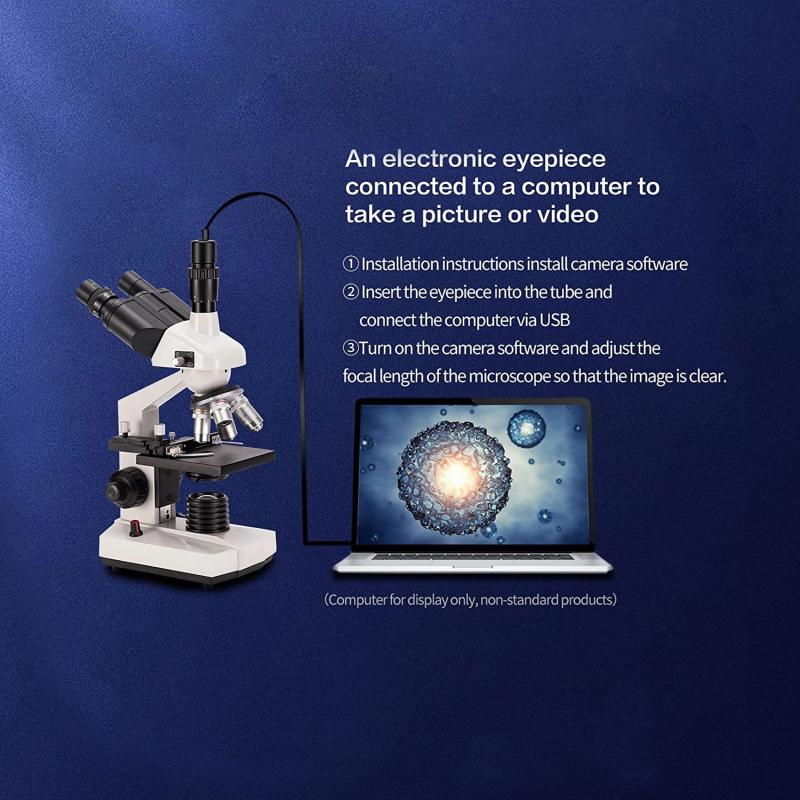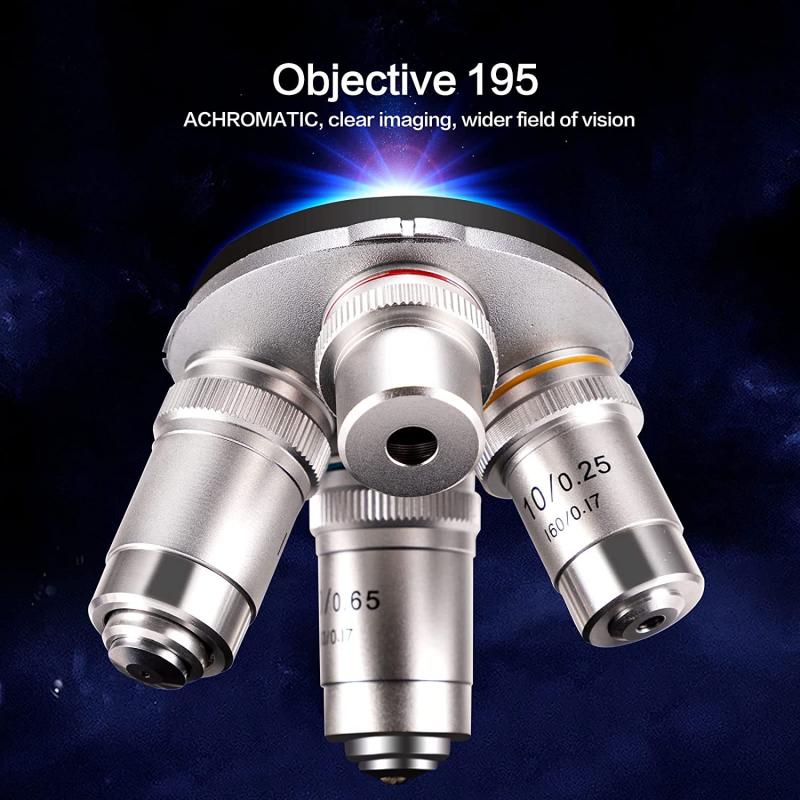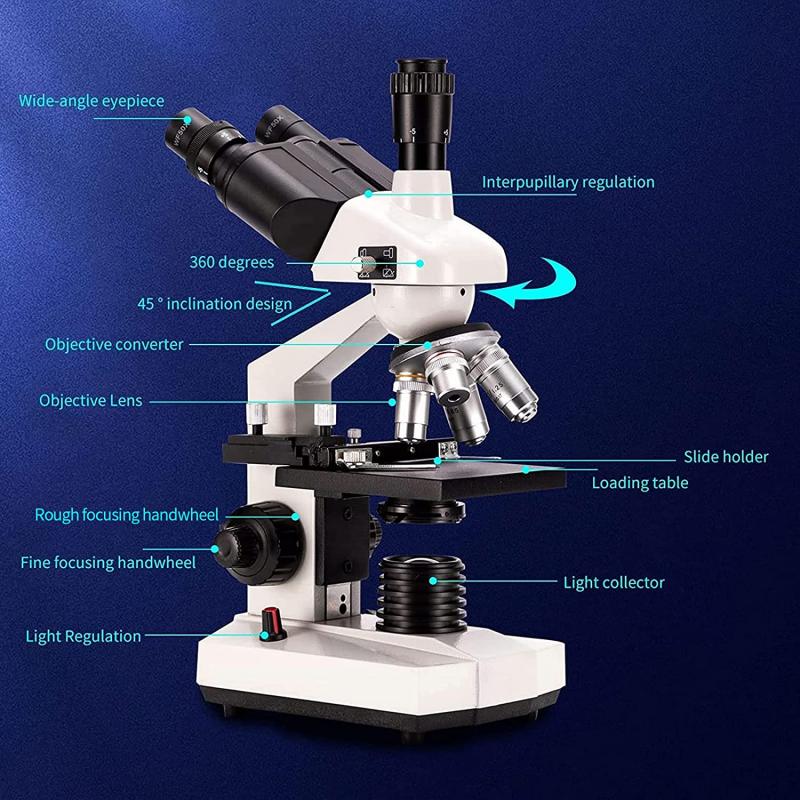Why Is An Electron Microscope Better ?
An electron microscope is better than an optical microscope because it uses a beam of electrons instead of light to magnify and visualize objects. Electrons have a much shorter wavelength than light, allowing for much higher resolution and the ability to see smaller details. Additionally, electron microscopes have a higher magnification power, enabling scientists to examine objects at a much greater level of detail. The electron beam can also be focused and controlled more precisely, allowing for sharper and clearer images. Furthermore, electron microscopes can be used to study a wide range of materials, including biological samples, metals, and minerals, providing valuable insights into their structure and composition.
1、 Higher resolution for imaging small-scale structures
An electron microscope is better than other types of microscopes due to its higher resolution for imaging small-scale structures. The resolution of a microscope refers to its ability to distinguish between two closely spaced objects. In the case of electron microscopes, they use a beam of electrons instead of light, which allows for much higher resolution imaging.
The higher resolution of electron microscopes is due to the shorter wavelength of electrons compared to light. According to the wave-particle duality principle, the resolution of a microscope is inversely proportional to the wavelength of the radiation used. Electrons have a much smaller wavelength than visible light, allowing for the visualization of smaller details and structures.
With the advancement of technology, electron microscopes have become even more powerful and capable of achieving higher resolutions. For instance, the development of aberration correction techniques has significantly improved the resolution of electron microscopes. Aberrations, which are imperfections in the electron beam, can distort the image and reduce resolution. By correcting these aberrations, scientists can now obtain clearer and more detailed images of small-scale structures.
The higher resolution of electron microscopes has revolutionized various fields of science and technology. It has enabled researchers to study the intricate details of biological cells, nanomaterials, and even individual atoms. This level of resolution has been crucial in advancing our understanding of fundamental processes in biology, materials science, and nanotechnology.
In conclusion, an electron microscope is better than other types of microscopes due to its higher resolution for imaging small-scale structures. The continuous advancements in electron microscopy technology have further enhanced its resolution capabilities, allowing scientists to explore the microscopic world with unprecedented detail and precision.

2、 Ability to visualize nanoscale objects and details
An electron microscope is better than other types of microscopes due to its ability to visualize nanoscale objects and details. Unlike light microscopes, which use visible light to magnify objects, electron microscopes use a beam of electrons to achieve much higher resolution. This allows scientists to observe structures and features that are too small to be seen with a light microscope.
The key advantage of an electron microscope is its high magnification and resolution capabilities. It can magnify objects up to a million times, revealing intricate details at the nanoscale level. This is particularly important in fields such as materials science, nanotechnology, and biology, where understanding the structure and behavior of tiny particles is crucial.
Moreover, electron microscopes have evolved over time, incorporating advanced techniques and technologies. For instance, scanning electron microscopes (SEM) provide three-dimensional images by scanning a focused beam of electrons across the surface of a sample. Transmission electron microscopes (TEM) allow scientists to observe the internal structure of specimens by transmitting electrons through them. These advancements have further enhanced the capabilities of electron microscopes, enabling researchers to study a wide range of materials and biological samples with unprecedented detail.
In recent years, electron microscopy has become even more powerful with the development of aberration-corrected electron microscopes. These instruments correct for imperfections in the electron beam, resulting in even higher resolution and improved image quality. This has opened up new possibilities for studying nanoscale phenomena and has contributed to breakthroughs in various scientific disciplines.
In conclusion, the ability to visualize nanoscale objects and details is the primary reason why an electron microscope is better than other types of microscopes. With its high magnification, resolution, and advanced techniques, electron microscopy has revolutionized our understanding of the nanoworld and continues to be an indispensable tool in scientific research.

3、 Enhanced magnification capabilities compared to optical microscopes
An electron microscope is better than an optical microscope due to its enhanced magnification capabilities. While optical microscopes use visible light to magnify specimens, electron microscopes use a beam of electrons. This fundamental difference allows electron microscopes to achieve much higher magnification levels and resolution than optical microscopes.
Electron microscopes can magnify specimens up to millions of times, allowing scientists to observe structures and details at the nanoscale level. This level of magnification is crucial in various scientific fields, such as materials science, biology, and nanotechnology, where the understanding of tiny structures is essential. Optical microscopes, on the other hand, are limited to magnifications of around 1000x to 2000x.
The higher resolution of electron microscopes is due to the shorter wavelength of electrons compared to visible light. According to the de Broglie equation, the wavelength of an electron is inversely proportional to its momentum. Electrons, being much smaller particles than photons, have a much shorter wavelength, allowing them to resolve smaller details in a specimen. This enables scientists to study the intricate structures of cells, molecules, and even individual atoms.
Moreover, recent advancements in electron microscopy techniques have further improved the capabilities of electron microscopes. For instance, the development of scanning electron microscopy (SEM) and transmission electron microscopy (TEM) has allowed for three-dimensional imaging and the study of internal structures of specimens, respectively. Additionally, the introduction of aberration-corrected electron microscopy has significantly enhanced the resolution and image quality, pushing the boundaries of what can be observed and understood at the atomic level.
In conclusion, an electron microscope is better than an optical microscope due to its enhanced magnification capabilities. The ability to achieve higher magnification levels and resolution allows scientists to explore the microscopic world in unprecedented detail, leading to breakthroughs in various scientific disciplines. With ongoing advancements in electron microscopy, our understanding of the nanoscale world continues to expand, opening up new possibilities for scientific research and technological advancements.

4、 Improved depth of field for three-dimensional imaging
An electron microscope is better than other types of microscopes due to its improved depth of field for three-dimensional imaging. Unlike traditional light microscopes, which use visible light to illuminate the sample, electron microscopes use a beam of electrons. This allows for much higher resolution and magnification, enabling scientists to observe tiny details and structures that would otherwise be impossible to see.
One of the key advantages of electron microscopes is their ability to provide a greater depth of field, which is crucial for three-dimensional imaging. Depth of field refers to the range of distances within a specimen that appear sharp and in focus at the same time. In traditional light microscopes, the depth of field is limited, making it difficult to capture clear images of complex three-dimensional structures. However, electron microscopes can overcome this limitation by using a smaller wavelength of electrons, resulting in a larger depth of field.
The improved depth of field in electron microscopes allows scientists to study the intricate details of biological samples, such as cells and tissues, in their natural three-dimensional state. This is particularly important in fields like cell biology, where understanding the spatial organization of cellular components is crucial for unraveling their functions and interactions.
Moreover, recent advancements in electron microscopy techniques, such as cryo-electron microscopy, have further enhanced the depth of field and resolution. Cryo-electron microscopy involves freezing the sample in a thin layer of ice, preserving its natural structure and minimizing artifacts. This technique has revolutionized structural biology, enabling scientists to visualize complex macromolecular structures at near-atomic resolution.
In conclusion, the improved depth of field offered by electron microscopes is a significant advantage for three-dimensional imaging. With the latest advancements in electron microscopy techniques, scientists can explore the intricate details of biological samples and gain a deeper understanding of their structure and function.







































